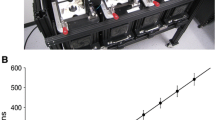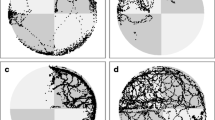Abstract
The learning abilities of planarian worms (Dugesia tigrina) were assessed by using a number of Pavlovian conditioning paradigms. Experiment 1 showed that planaria were susceptible to basic conditioning in that they readily developed a conditioned response to a change in ambient luminance when it was consistently paired with an electric shock over a number of trials. In Experiment 2, the change in luminance was presented in a compound with a vibration stimulus during conditioning. Subsequent tests revealed poor conditioning of the elements compared with control groups in which the animals were conditioned in the presence of the elements alone, an instance of overshadowing. In Experiment 3, pre-training of one of the elements before compound conditioning resulted in blocking of learning about the other element. These results add to other studies that have reported cue competition effects in animal species belonging to different phyla (chordate, mollusk, arthropod), suggesting that learning in these phyla could be ruled by similar principles. The results are discussed adopting an evolutionary-comparative approach.




Similar content being viewed by others
References
Acebes F, Solar P, Carnero S, Loy I (2009) Blocking of conditioning of tentacle lowering in the snail (Helix aspersa). Q J Exp Psychol 62:1315–1327
Agata K, Soejima Y, Kato K, Kobayashi C, Umesono Y, Watanabe K (1998) Structure of planarian central nervous system (CNS) revealed by neuronal cell markers. Zool Science 15:433–440
Balsam PD, Gallistel CR (2009) Temporal maps and informativeness in associative learning. Trends Neurosci 32:73–78
Baxter R, Kimmel HD (1963) Conditioning and extinction in the planarian. Am J Psych 76:665–669
Beckers T, Miller RR, De Houwer J, Urushihara K (2006) Reasoning rats: forward blocking in Pavlovian animal conditioning is sensitive to constraints of causal inference. J Exp Psychol General 135:92–102
Blaisdell AP, Sawa K, Leising KJ, Waldmann MR (2006) Causal reasoning in rats. Science 311:1020–1022
Cole S, McNally GP (2007) Opioid receptors mediate direct predictive fear learning: evidence from one-trial blocking. Learn Mem 14:229–235
Couvillon PA, Bitterman ME (1989) Reciprocal overshadowing in the discrimination of color-odor compounds by honeybees: further tests of a continuity model. Anim Learn Behav 17:213–222
Couvillon PA, Arakaki L, Bitterman ME (1997) Intramodal blocking in honeybees. Anim Learn Behav 25:277–282
Davidson C, Prados J, Gibson CL, Young AMJ, Barnes D, Sherlock R, Hutchinson CV (2011) Shedding light on photosensitive behaviour in brown planaria (Dugesia tigrina). Perception 40:743–746
De Houwer J, Beckers T (2003) Secondary task difficulty modulates forward blocking in human contingency learning. Q J Exp Psychol 56B:345–357
Dickinson A, Hall G, Mackintosh NJ (1976) Surprise and attenuation of blocking. J Exp Psychol Anim Behav Proc 2:213–222
Eriksson KS, Panula P (1994) Gamma-aminobutyric acid in the nervous system of a planarian. J Comp Neurol 345:528–536
Gallistel CR, Gibbon J (2000) Time, rate, and conditioning. Psychol Rev 107:289–344
Hebb D (1949) The organization of behavior. Wiley, New York
Jacobson AL, Horowitz SD, Fried C (1967) Classical conditioning, pseudo-conditioning or sensitization in the planarian. J Comp Physiol Psychol 64:73–79
Jensen DD (1965) Paramecia, planaria, pseudo-learning. Anim Behav 13(Supplement 1):9–20
Kamin L (1965) Temporal and intensity characteristics of the conditioned stimulus. In: Prokasy WF (ed) Classical conditioning. Apple-Century-Crofts, New York, pp 118–147
Kamin L (1969) Selective association and conditioning. In: Mackintosh NJ, Honig WK (eds) Fundamental issues in associative learning. Dalhousie University Press, Halifax, pp 42–64
Kimmel HD, Yaremko RM (1966) Effect of partial reinforcement on acquisition and extinction of classical conditioning in the planarian. J Comp Physiol Psychol 61:299–301
Le Pelley ME, Oakeshott SM, McLaren IPL (2005) Blocking and unblocking in human causal learning. J Exp Psychol Anim Behav Proc 31:56–70
Levison MJ, Gavurin EI (1979) Truly random control group in Pavlovian conditioning of planaria (Dugesia dorotocephala). Psychol Reports 53:987–992
Lovibond PF (2003) Causal beliefs and conditioned responses: retrospective revaluation induced by experience and by instruction. J Exp Psychol Lear Mem Cogn 29:97–106
Loy I, Fernandez V, Acebes F (2006) Conditioning of tentacle lowering in the snail (Helix aspersa): conditioning, latent inhibition, overshadowing, second-order conditioning, and sensory preconditioning. Learn Behav 34:305–314
Mackintosh NJ (1975) A theory of attention: variations in the associability of stimuli with reinforcement. Psychol Rev 82:276–298
Mackintosh NJ (1976) Overshadowing and stimulus intensity. Anim Learn Behav 4:186–192
Miller RR, Matzel LD (1987) The comparator hypothesis: a response rule for the expression of associations. In: Bower GH (ed) The psychology of learning and motivation, vol 22. Academic Press, San Diego, pp 51–92
Mitchell CJ, Lovibond PF (2002) Backward and forward blocking in human electrodermal conditioning: blocking requires an assumption of outcome additivity. Q J Exp Psychol 55B:311–329
Pavlov IP (1927) Conditioned reflexes. Oxford University Press, London
Pearce JM, Hall G (1980) A model for Pavlovian learning: variations in the effectiveness of conditioned but not of unconditioned stimuli. Psychol Rev 87:532–552
Pearce JM, Dopson JC, Haselgrove M, Esber GR (2012) The fate of redundant cues during blocking and a simple discrimination. J Exp Psychol Anim Behav Proc 38:167–179
Raffa RB, Valdez JM (2001) Cocaine withdrawal in Planaria. Eur J Pharmacol 430:143–145
Rawls SM, Rodriguez T, Baron DA, Raffa RB (2006) A nitric oxide synthase inhibitor (l-NAME) attenuates abstinence-induced withdrawal from both cocaine and a cannabinoid agonist (WIN 55212-2) in Planaria. Brain Res 1099:82–87
Rescorla RA (1967) Pavlovian conditioning and its proper control procedures. Psych Rev 74:71–80
Rescorla RA, Wagner AR (1972) A theory of pavlovian conditioning: variations in the effectiveness of reinforcement and non-reinforcemen. In: Black AH, Prokasy WF (eds) Classical conditioning II. Apple-Century-Crofts, New York, pp 64–99
Sahley C, Rudy JW, Gelperin A (1981) An analysis of associative learning in a terrestrial mollusc. J of Comp Physiol A144:1–8
Sarnat HB, Netsky MG (1985) The brain of the planarian as the ancestor of the human brain. Can J Neurol Sci 12:296–302
Smith BH, Cobey S (1994) The olfactory memory of the honeybee Apis mellifera. II. Blocking between odorants in binary mixtures. J Exp Biol 195:91–108
Stout SC, Miller RR (2007) Sometimes-competing retrieval (SOCR): a formalization of the comparator hypothesis. Psychol Rev 114:759–783
Thompson R, McConnell JV (1955) Classical conditioning in the planarian Dugesia dorotocephala. J Comp Physiol Psychol 48:65–68
Umeda S, Stagliano GW, Borenstein MR, Raffa RB (2005) A reverse-phase HPLC and fluorescence detection method for measurement of 5-hydroxytryptamine (serotonin) in Planaria. J Pharmacol Toxicol Meth 51:73–76
Wagner AR (1981) SOP: a model of automatic memory processing in animal behavior. In: Spear NE, Miller RR (eds) Information processing in animals: memory mechanisms. Erlbaum, Hillsdale, pp 5–47
Wisenden BD, Millard MC (2001) Aquatic flatworms use chemical cues from injured conspecifics to assess predation risk and to associate risk with novel cues. Anim Behav 62:761–766
Acknowledgments
The present research was supported by an NC3Rs-LASA (UK) Small Award to the authors.
Author information
Authors and Affiliations
Corresponding author
Rights and permissions
About this article
Cite this article
Prados, J., Alvarez, B., Howarth, J. et al. Cue competition effects in the planarian. Anim Cogn 16, 177–186 (2013). https://doi.org/10.1007/s10071-012-0561-3
Received:
Revised:
Accepted:
Published:
Issue Date:
DOI: https://doi.org/10.1007/s10071-012-0561-3




